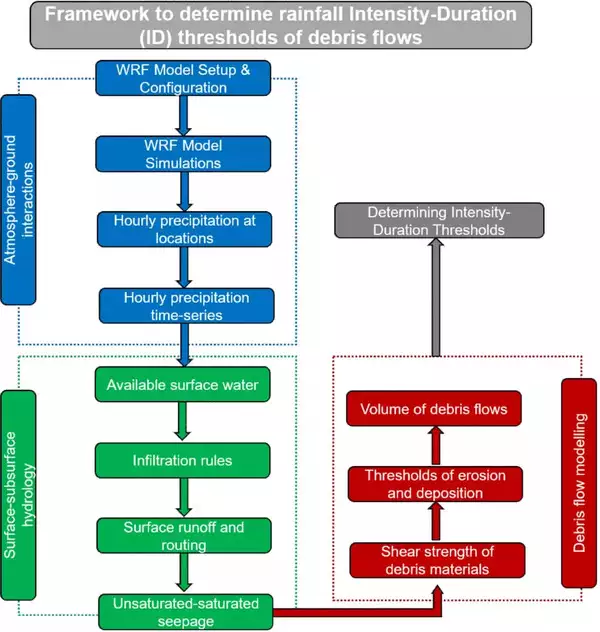Uttarakhand
Early Warning System by IIT-Roorkee Researchers
- 11 May 2024
- 2 min read
Why in News?
Recently, researchers from IIT-Roorkee have developed a framework to predict landslides in the Himalayan region before they occur by analyzing rainfall patterns, giving at least a six-hour early warning.
Key Points
- This study has been published in a peer-reviewed scientific journal and is considered the first of its kind in India.
- The combined expertise of specialists in various fields like meteorology, hydrology, geomorphology, remote sensing, and geotechnical engineering has led to the creation of a method that combines meteorological modeling with numerical simulations of debris flows.
- Researchers will gather real-time data on rainfall patterns in the hills from weather research agencies.
Landslides
- These are natural disasters occurring mainly in mountainous terrains where there are conducive conditions of soil, rock, geology and slope.
- A sudden movement of rock, boulders, earth or debris down a slope is termed a landslide.
- Causes:
- Natural causes that trigger it include heavy rainfall, earthquakes, snow melting and undercutting of slopes due to flooding.
- They can also be caused by anthropogenic activities such as excavation, cutting of hills and trees, excessive infrastructure development, and overgrazing by cattle.
- Some of the main factors that influence landslides are lithology, geological structures like faults, hill slopes, drainage, geomorphology, land use and land cover, soil texture and depth, and weathering of rocks.
- All these are factored in when a landslide susceptibility zone is earmarked for planning and making predictions.






-min.jpg)